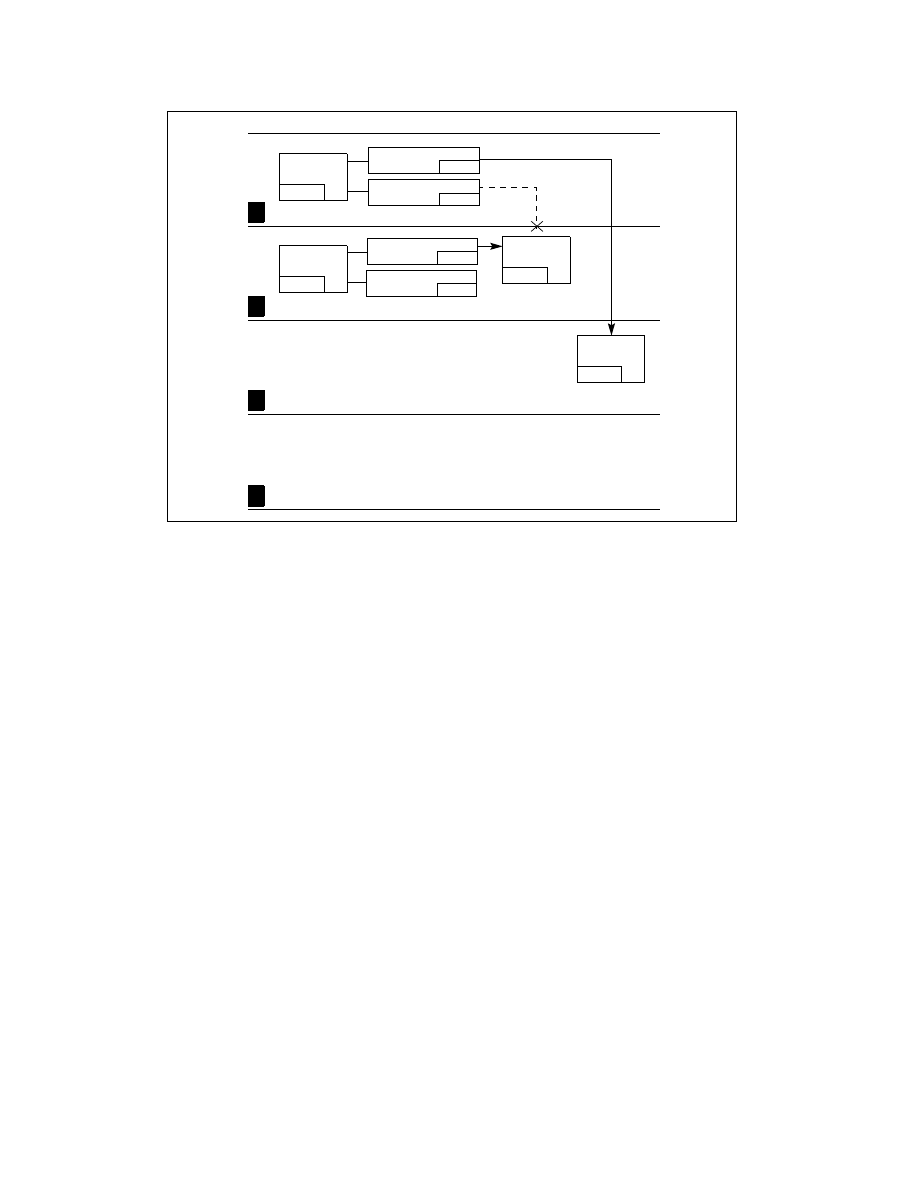
5-12 Vol. 3A
PROTECTION
The RPL of the segment selector that points to a nonconforming code segment has a limited effect on the privilege
check. The RPL must be numerically less than or equal to the CPL of the calling procedure for a successful control
transfer to occur. So, in the example in Figure 5-7, the RPLs of segment selectors C1 and C2 could legally be set to
0, 1, or 2, but not to 3.
When the segment selector of a nonconforming code segment is loaded into the CS register, the privilege level field
is not changed; that is, it remains at the CPL (which is the privilege level of the calling procedure). This is true, even
if the RPL of the segment selector is different from the CPL.
5.8.1.2
Accessing Conforming Code Segments
When accessing conforming code segments, the CPL of the calling procedure may be numerically equal to or
greater than (less privileged) the DPL of the destination code segment; the processor generates a general-protec-
tion exception (#GP) only if the CPL is less than the DPL. (The segment selector RPL for the destination code
segment is not checked if the segment is a conforming code segment.)
In the example in Figure 5-7, code segment D is a conforming code segment. Therefore, calling procedures in both
code segment A and B can access code segment D (using either segment selector D1 or D2, respectively), because
they both have CPLs that are greater than or equal to the DPL of the conforming code segment. For conforming
code segments, the DPL represents the numerically lowest privilege level that a calling procedure may
be at to successfully make a call to the code segment.
(Note that segments selectors D1 and D2 are identical except for their respective RPLs. But since RPLs are not
checked when accessing conforming code segments, the two segment selectors are essentially interchangeable.)
When program control is transferred to a conforming code segment, the CPL does not change, even if the DPL of
the destination code segment is less than the CPL. This situation is the only one where the CPL may be different
from the DPL of the current code segment. Also, since the CPL does not change, no stack switch occurs.
Conforming segments are used for code modules such as math libraries and exception handlers, which support
applications but do not require access to protected system facilities. These modules are part of the operating
system or executive software, but they can be executed at numerically higher privilege levels (less privileged
levels). Keeping the CPL at the level of a calling code segment when switching to a conforming code segment
Figure 5-7. Examples of Accessing Conforming and Nonconforming Code Segments From Various Privilege Levels
Code
Segment D
Code
Segment C
Code
Segment A
Lowest Privilege
Highest Privilege
CPL=3
Code
Segment B
Nonconforming
Code Segment
Conforming
Code Segment
3
2
1
0
CPL=2
DPL=2
DPL=1
Segment Sel. D1
RPL=2
Segment Sel. D2
RPL=3
Segment Sel. C2
RPL=3
Segment Sel. C1
RPL=2